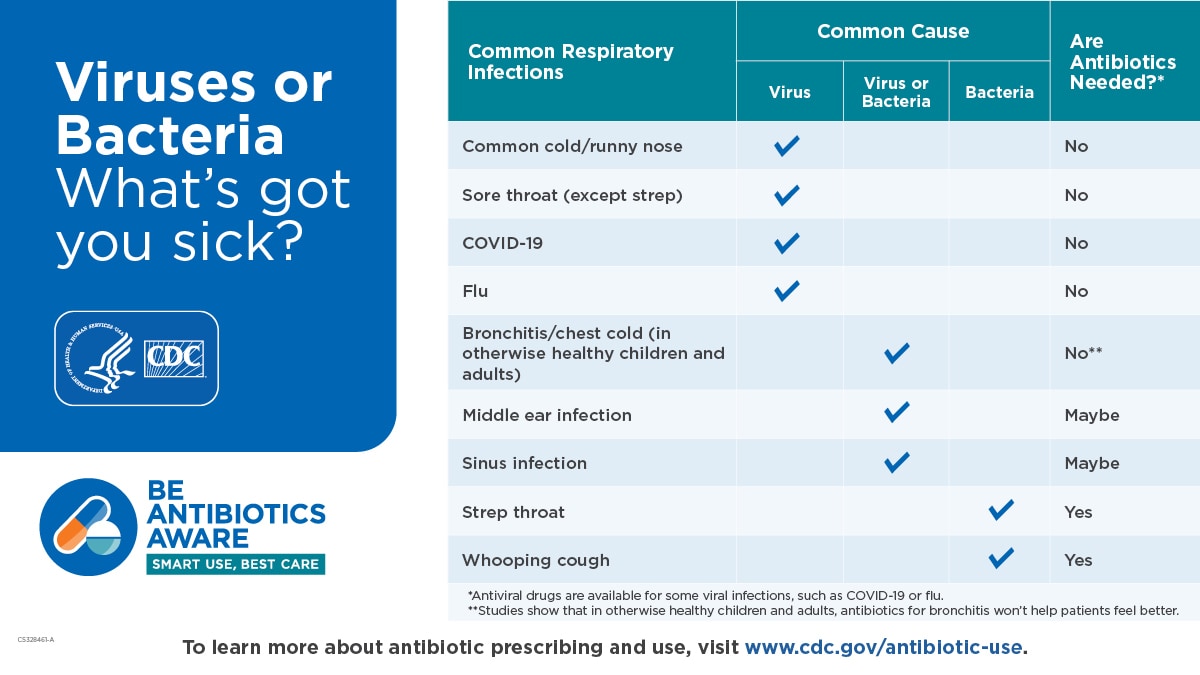Key points
- Do you have pain or burning when you urinate? You might have a urinary tract infection (UTI).
- Antibiotics treat UTIs. Your healthcare provider can determine if you have a UTI and what antibiotic you need.
Overview
The urinary tract includes the bladder, urethra and kidneys (see figure). UTIs are common infections that happen when bacteria, often from the skin or rectum, enter the urethra and infect the urinary tract.

Types and strains
- Bladder infection (most common, also known as cystitis).
- Kidney infection (less common but more serious, also known as pyelonephritis).
Signs and symptoms
Symptoms of a bladder infection can include:
- Pain or burning while urinating
- Frequent urination
- Feeling the need to urinate despite having an empty bladder
- Bloody urine
- Pressure or cramping in the groin or lower abdomen
Symptoms of a kidney infection can include:
- Fever
- Chills
- Lower back pain or pain in the side of your back
- Nausea or vomiting
Younger children may not be able to tell you about UTI symptoms they are having. While fever is the most common sign of UTI in infants and toddlers, most children with fever do not have a UTI.
Risk factors
UTIs are more common in females because their urethras are shorter and closer to the rectum. This makes it easier for bacteria to enter the urinary tract.
Other risk factors:
- A previous UTI.
- Recent sexual activity.
- Changes in the bacteria that live inside the vagina or vaginal flora. For example, menopause or the use of spermicides can cause these bacterial changes.
- Pregnancy.
- Age (older adults and young children are more likely to get UTIs).
- Structural problems in the urinary tract, such as enlarged prostate.
- Poor hygiene, for example, in children who are potty-training.
Prevention
- Urinate after sexual activity.
- Stay well hydrated.
- Take showers instead of baths.
- Minimize douching, sprays or powders in the genital area.
- Teach girls when potty training to wipe front to back.
When to seek medical care
- If you or your child have symptoms of a UTI or for any symptom that is severe or concerning.
Talk to your healthcare provider right away
Diagnosis
Your healthcare provider will determine if you have a UTI by:
- Asking about symptoms.
- Doing a physical exam.
- Ordering urine tests, if needed.
- Starting an antibiotic to treat a UTI, if needed.
Treatment
- Taking antibiotics, prescribed by a healthcare provider, at home can treat most UTIs. Your healthcare provider might also recommend medicine to help lessen the pain or discomfort. Some cases may require treatment in a hospital.
Any time you take antibiotics, they can cause side effects.
- Side effects can include rash, dizziness, nausea, diarrhea and yeast infections.
- More serious side effects can include antimicrobial-resistant infections or C. diff infection, which causes diarrhea that can lead to severe colon damage and death.
Call your healthcare provider if you develop any side effects while taking your antibiotic.
How to feel better
- Drink plenty of water or other fluids.
- If your healthcare provider prescribes you antibiotics:
- Take antibiotics exactly as your healthcare provider tells you.
- Do not share your antibiotics with others.
- Do not save antibiotics for later. Talk to your healthcare provider about safely discarding leftover antibiotics.
Talk with your healthcare provider if you have any questions about your antibiotics.

